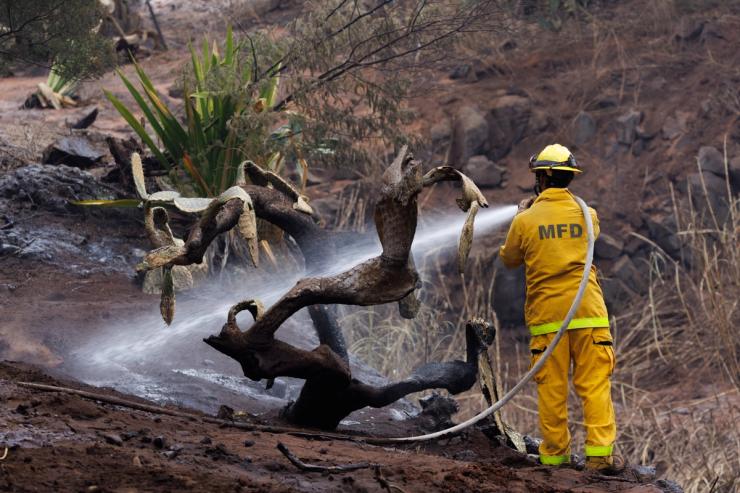The News
There’s growing anger in Hawaii over the government’s response to the devastating Maui wildfire that has killed nearly 100 people — making it the state’s worst natural disaster and the deadliest U.S. wildfire in a century.
We’ve curated the latest reporting and analysis on the criticism over officials’ handling of the blaze.
Insights
- Before the fires, the state’s electric utility company did not cut off electricity to areas where high winds and potential fires were forecast, a strategy that is used elsewhere to keep downed power lines from igniting. Hawaii Electric knew that could be an effective strategy, but had not integrated it into its fire prevention plans. — The Washington Post
- Hawaiians are used to emergency siren warnings; the state has 400 alarms, 80 of which are in Maui, to alert residents to tsunamis and other disasters. However, the siren warning system was not activated during the wildfires. “So many of us … felt like we had absolutely no warning,” one resident said. — CNN
- As firefighters rushed to respond to the blazes, they found that some fire hydrants were running dry. Melted pipes at burned homes caused water to leak out and depressurize the water system that also supplied the hydrants. Other factors had affected the island’s water supply before the wildfires, with officials breaking ground on a new well two months ago amid drought conditions and population growth. — The New York Times
- What exactly caused the fires? Officials are still investigating, but dry conditions and a nearby hurricane likely contributed to its spread. One possible area of focus for the cause is transmission equipment. — The Wall Street Journal
AD


